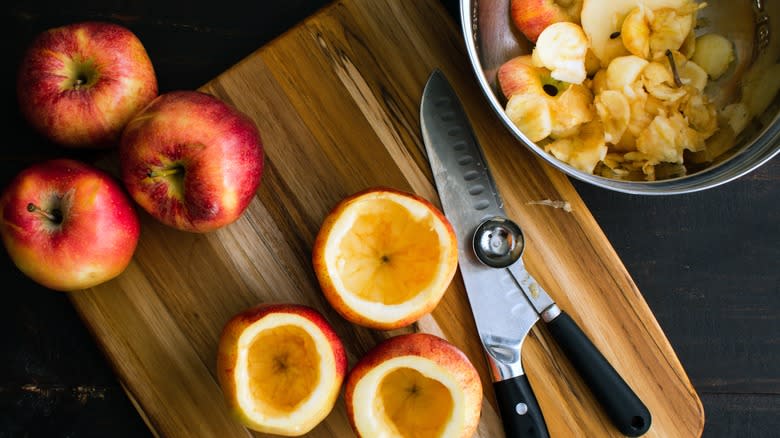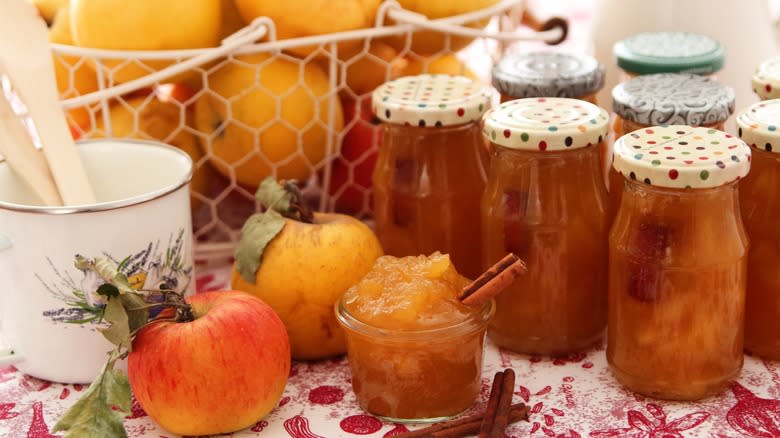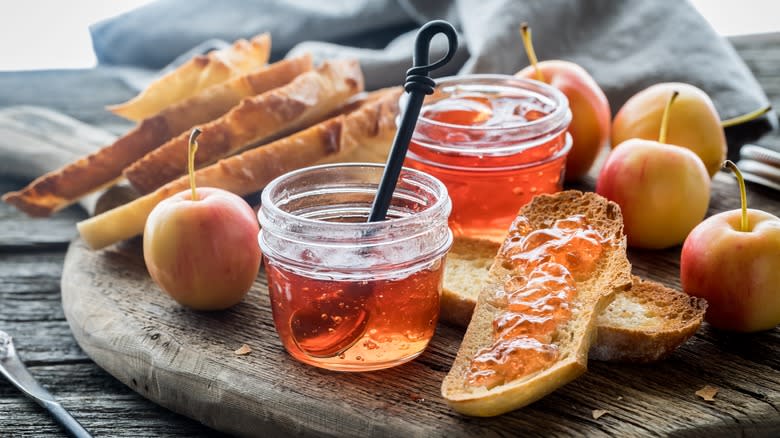The Delicious Reason You Should Save Your Apple Cores

While July to November is officially apple-picking season, you can thankfully purchase apples all year round. But with all the hype around the fruit themselves, we can be quick to throw away the peels and the cores, mistakenly deeming them useless. However, there is an easy way you can not only lessen your food waste but get even more flavorful use out of your apples. The delicious way to do this is through making jelly.
Apple jelly is simple to make, easily preserved and tastes amazing. The beauty of this creation is that it works with any type of apple so you can experiment with different kinds and see which flavor suits you best. By saving your cores and peels and storing them in a separate container, you can combine them with a few other basic pantry ingredients to bring new life to these frequently composted parts of the fruit.
Read more: 12 Vegetables And Fruits That Used To Look Very Different
Making Jelly From Your Apple Cores

If you're planning to make the jelly immediately after using the rest of the apple for another recipe you can dump the scraps straight into a pot for boiling. Otherwise, keep them in a clean, airtight container in the fridge until you are ready to use them. By boiling the scraps you'll release the natural flavor from the cores and peels, so you can strain the juice out once they're cooked.
Another thing that gets strained along with the juice is the natural pectin that is stored in the scraps of your apples. Pectin, which can be bought in stores, is a naturally occurring vegan alternative to gelatin that is perfect for making jelly. To make a fuller jelly, you'll want to add more pectin, water, and sugar back into your juice before boiling it all together to create the final jelly mixture. Most people recommend letting the mixture cool before portioning it into mason jars with a water bath and then letting it sit.
Jellies are very safe to preserve as long as you follow proper canning protocols. Jelly makers are advised to sterilize their mason jars ahead of time, use a two-piece lid that allows for airtight sealing, and place finished jars in a boiling water bath for at least 10 minutes before storing at room temperature. It's also important to remember that you have to move jelly to the fridge once a jar is opened for the first time.
Making The Most Of Your Apple Jelly

Most people associate autumn with apple-flavored dishes but by turning your cores into jelly you can enjoy this fruit all year round. Use your jelly the classic way by spreading it onto a holiday loaf like cranberry apple nut bread. This fruit also famously pairs well with cinnamon and your jelly could be the perfect addition to a batch of apple-cinnamon doughnuts. Or if you're having a bigger get-together, pour some of your jelly into a bowl and surround it with fruit crisps, crackers, and some manchego cheese to create a charcuterie board.
You can also turn your jars into personalized presents by decorating the lids with festive ribbons and giving them out to friends. This can be the perfect holiday gift or party favor that breaks the store-bought mold. Or perhaps you've just unlocked a new side hustle and can sell your jelly at a local farmers market. Once you've followed our expert tips for making jams or jellies and added your own decorative flair, the possibilities are endless.
Read the original article on The Daily Meal.

